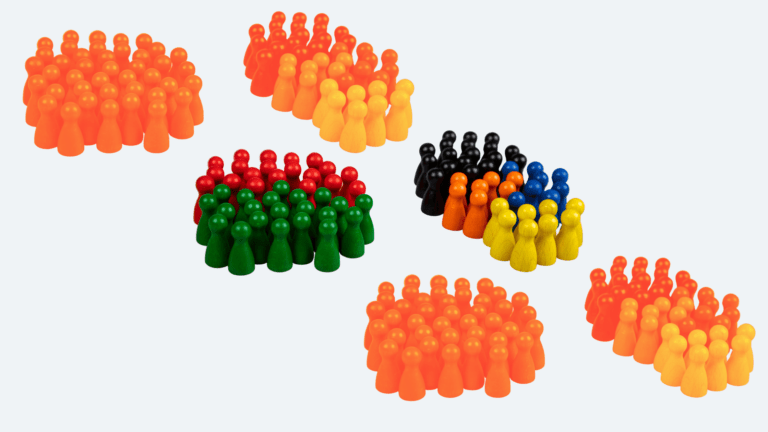“One Nation, One Election” also known as “Simultaneous Elections” is in discussion again due to push by the highest offices of our country and by the ruling party. It is touted to be the best possible solution to fix the ills of the current electoral system which is said to adversely impact policymaking and governance. The examination of the suitability of One Nation, One Election is done based on my reading of a discussion paper by “Bibek Debroy” and “Kishore Desai” on Analysis of Simultaneous Elections: The “What”, “Why” and “How”.
Comments on the sections requiring further discussion has been put forward here.
a. Section 1.3 claims frequent electoral cycles to have a negative impact on administrative and development activities in the poll-bound states. It is quite understandable that since District Magistrate or an equivalent office is the nodal agency for the implementation of developmental programs at the district level and is also responsible for conducting elections, frequent electoral cycles are bound to have an impact on developmental activities. Can a system be evolved wherein Developmental and electoral responsibilities be separated from a single office? Since preparing for elections is a tedious task, it gets started much before the “Model Code of Conduct” (MCC) is enforced. This would save precious time for the developmental activities to get on the ground (when MCC is not enforced) and usual administration to continue smoothly even during the period MCC is enforced.
Can an ad-hoc arrangement be made by borrowing the officers from neighbouring states having similar administrative setup and language so that the government does not bear more expense towards creating a separate cadre of officers for holding elections?
b. The authors in section 2.7 claims the sheer number of 3rd tier government within the state to be the only factor responsible for the impossibility of holding simultaneous elections for the local governments. Let’s examine it. A casual observation will reveal that the number of voters per booth in Lok Sabha (LS), Vidhan Sabha (VS) or the local government (LG) elections is generally between 800–1200. How does it matter whether the candidates going at booth votes at 2 EVMs (for LS, VS) or 3 EVMs (LS, VS, LG)? Since much of the developmental works occurs with the help of Local Governments, parties in power at the Centre and States want their party to be in charge of Local Governments. Since it will be a nightmare for the political parties to make their “star campaigners” deliver speeches 24×7, they want to avoid this situation.
Holding local level elections along with LS and VS elections, if conducted at all, will have one positive impact. Due to the shortage of campaigners, more local leaders will get the chance and it will lead to diversification in the leadership, which will be healthy for the political parties and democracy.
c. Section 3.10 claims that “Enforcement of MCC impacts governance”. The total period of enforcement of MCC for a state (not undergoing premature dissolution of state assembly) is 4 months, combined for LS and VS elections, in a period of 5 years. Though every day of non-governance counts, owing to electoral constraints, the period of 4 months in 60 months is not a very significant period. Moreover, Dr S Y Quarishi, former CEO, Election Commission of India says that it allows the politicians to face the junta twice in a period of 5 years and hence make them more accountable. This cannot be ensured under the system of Simultaneous Elections. The authors of the paper Analysis of Simultaneous Elections: The “What”, “Why” and “How” in section 4.6 argue that accountability of a politician once in 5 years is sufficient enough in the democratic structure of our country. I think most of us would refute this claim in light of our daily experience.
The MPs are notionally the representative of the people but in all practical sense, most of us will agree that they are not our true representatives. This argument is supported by the fact that the individual opinion of the MP doesn’t matter while voting for a bill in the House. It the whip of the party which dictates their voting behaviour. Thanks to the anti-defection law! Unless the Anti-defection law is suitably amended, the current system seems to be a better alternative wherein the politician is held accountable more than once.
d. I second the author in their argument made in section 3.12 that conducting simultaneous election would result in a sharp decline in the expenditure made by government and political parties due to the optimal use of security forces, government officials and other government resources. The sharp reduction will be observed in the case of political parties who will now not have to shell out money twice when they go out asking votes from voters.
e. According to the author, frequent state assembly elections makes the political parties worry about the need to keep the inflow of funds and contributions continued. This is said to be key drivers behind corruption and black money (Section 3.20). In order to solve this issue “Can we not have separate accounts for state units of parties (irrespective of whether they are national or state level parties) and not allow transfer of funds between the state unit and national unit of same party?” The rationale for this move will be that voters have a choice whether they want to see the same party at state and centre as well.
f. Undoubtedly, there is merit in the argument made in section 3.25 that the Simultaneous elections will allow efficient use of Central Armed Police Force (CAPF), which is deployed during the conduct of elections but has been inducted in the service for internal security, to better fulfil its intended mandate.
g. The authors seem to be significantly concerned about numerous political rallies to be impacting road traffic, and leading to noise pollution which will reduce once “Simultaneous Elections” are in place (Section 3.27 a). This argument seems bizarre given the situation most of the Indian spend their daily life.
h. The authors quote the statement made by Dr. S Y Quarishi that “elections are polarizing events” and consistent elections keeps these evils up in the air (Section 3.27 b). Hence, holding Simultaneous elections will allow this evil to spring up once in 5 years and reduce its impact on society vis-à-vis the current scenario. However, the author fails to point out that the polarizing nature of elections owe their origin to the method of deciding the winner i.e. First Past The Post (FPTP) system wherein even a margin of 1 vote can make a candidate win irrespective of his/her vote share.
The alternative to toe this evil is to change the FPTP system to a system of multi-candidate constituency wherein candidates securing a threshold vote share are allowed to hold the office. This system will allow the marginal groups to come together and send their candidate to office which is not feasible in the current system.
i. In Section 3.27 c, the authors claim that frequent elections impact governance and policy-making as it leads to short-term vision and economic planning. Forbidding office holders in the government from campaigning, will free them of their party responsibilities and allow the cadre of their political party to swing in for campaigning. This comes from the view that officeholders have a primary duty towards their office for which they have been elected for. This approach can solve the ill of short-term vision.
j. The authors in section 4.7 claims that expenditure to woo electorates incentivizes the politicians to recover their investment. Though the simultaneous elections will surely reduce the “investment” made by the politician and hence reduce this incentive to siphon off the public money it is still unclear to me as to how would it put an end to such practice.
k. The authors contest the study conducted by IDFC which says that voters tend to choose same party at the state level and national level when elections for both LS and VS occur simultaneously or within a period of 6 months by saying that “mere correlation does not imply causation”. I agree with the authors. But it doesn’t rule out the possibility of causation either. The voter behaviour as argued by the authors is a complex phenomenon. We don’t know the answer(read, causation) doesn’t mean that there cannot be a answer.
The electoral battleground has undergone a sea change since the 1950s. Elections used to be fought with public campaigning and print media. But in the modern era, it is social media where battles are fought. It is money that mainly shapes the narrative. Hence, an extremely cautious approach needs to be taken while examining the merits and demerits of Simultaneous Elections. In my opinion, with suggested reforms, we would be good to go without falling for “One Nation, One Election”.
Read more: RTE Act: In The Hope of a Promising Dawn



Good one
Overall, a very well argued piece.
One can appreciate the author’s arguments without fully agreeing with them.
Ashutosh has reviewed and critiqued Debroy and Desai’s paper with an open mind and intellectual honesty.
Fully endorse Ashutosh’s dismissal of Debroy-Desai’s concern for political rallies leading to traffic and pollution as bizarre in para g.
In para k, he rightly points out that causation, if not established, can’t be ruled out either in the IDFC study.
However, the suggestion in para for borrowing officers from neighbouring states to conduct elections seems impractical. Given that Indian bureaucracy is understaffed, it seems unlikely that any state will be able to spare its officials for another.
Overall, a good and educative read.